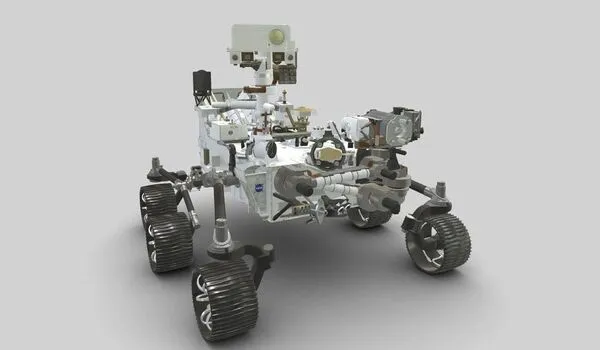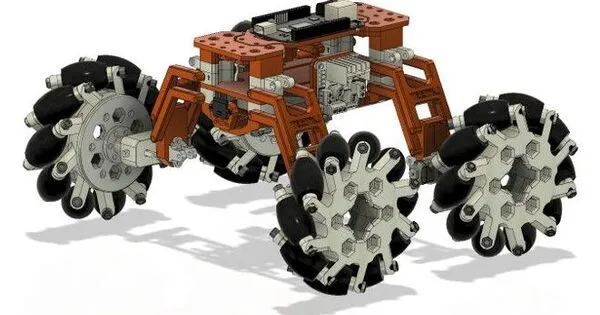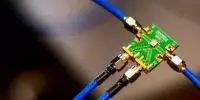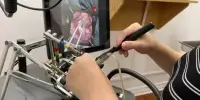Researchers have created a novel soft robot design that performs three simultaneous behaviors: rolling ahead, spinning like a record, and orbiting around a center point. The technology, which functions without human or computer control, shows promise for the development of soft robotic systems capable of navigating and mapping new surroundings.
The new soft robots are known as twisted ring bolts. They are formed of ribbon-like liquid crystal elastomers that are twisted, much like a rotini noodle, and then linked at the end to produce a bracelet-like loop. When the robots are placed on a surface that is at least 55 degrees Celsius (131 degrees Fahrenheit) hotter than the surrounding air, the portion of the ribbon that touches the surface compresses, but the portion exposed to the air does not. This creates a rolling motion; the warmer the surface, the faster the robot rolls.
“The ribbon rolls on its horizontal axis, giving the ring forward momentum,” says Jie Yin, corresponding author of a paper on the work and an associate professor of mechanical and aerospace engineering at North Carolina State University.
Soft robotics is still a relatively new field. Finding new ways to control the movement of soft robots in a repeatable, engineered way moves the field forward. And advancing our understanding of what is possible is exciting.
Jie Yin
The twisted ringbot also rotates on its central axis, much like a record on a turntable. As the twisted ringbot moves forward, it follows an orbital path around a central point, forming a big circle. However, if the twisted ringbot reaches a boundary, such as a box wall, it will go along it.
“This behavior could be particularly useful for mapping unknown environments,” Yin said.
The twisted ring bolts are instances of devices whose activity is guided by physical intelligence, which means that their activities are determined by their structural design and materials rather than by a computer or human involvement.
The researchers are able to fine-tune the behavior of the twisted ringbot by engineering the geometry of the device. For example, they can control the direction that the twisted ringbot spins by twisting the ribbon one way or the other. Speed can be influenced by varying the width of the ribbon, the number of twists in the ribbon, and so on.

In proof-of-concept testing, the researchers showed that the twisted ringbot was able to follow the contours of various confined spaces.
“Regardless of where the twisted ringbolt is introduced to these spaces, it is able to make its way to a boundary and follow the boundary lines to map the space’s contours – whether it’s a square, a triangle, and so on,” says Fangjie Qi, first author of the paper and a Ph.D. student at NC State. “It also identifies gaps or damage in the boundary.
“We were also able to map the boundaries of more complex spaces by introducing two twisted ringbots into the space, with each robot rotating in a different direction,” Qi said. “This causes them to travel in separate directions along the barrier. And by comparing the routes of two twisted ring bolts, we can see the features of the more complex space.”
“In principle, no matter how complex a space is, you would be able to map it if you introduced enough of the twisted ring bots to map the whole picture, each one giving part of it,” he explains. “And, considering how affordable these are to create, that’s feasible.
“Soft robotics is still a relatively new field,” Yin says. “Finding new ways to control the movement of soft robots in a repeatable, engineered way moves the field forward. And advancing our understanding of what is possible is exciting.”
















